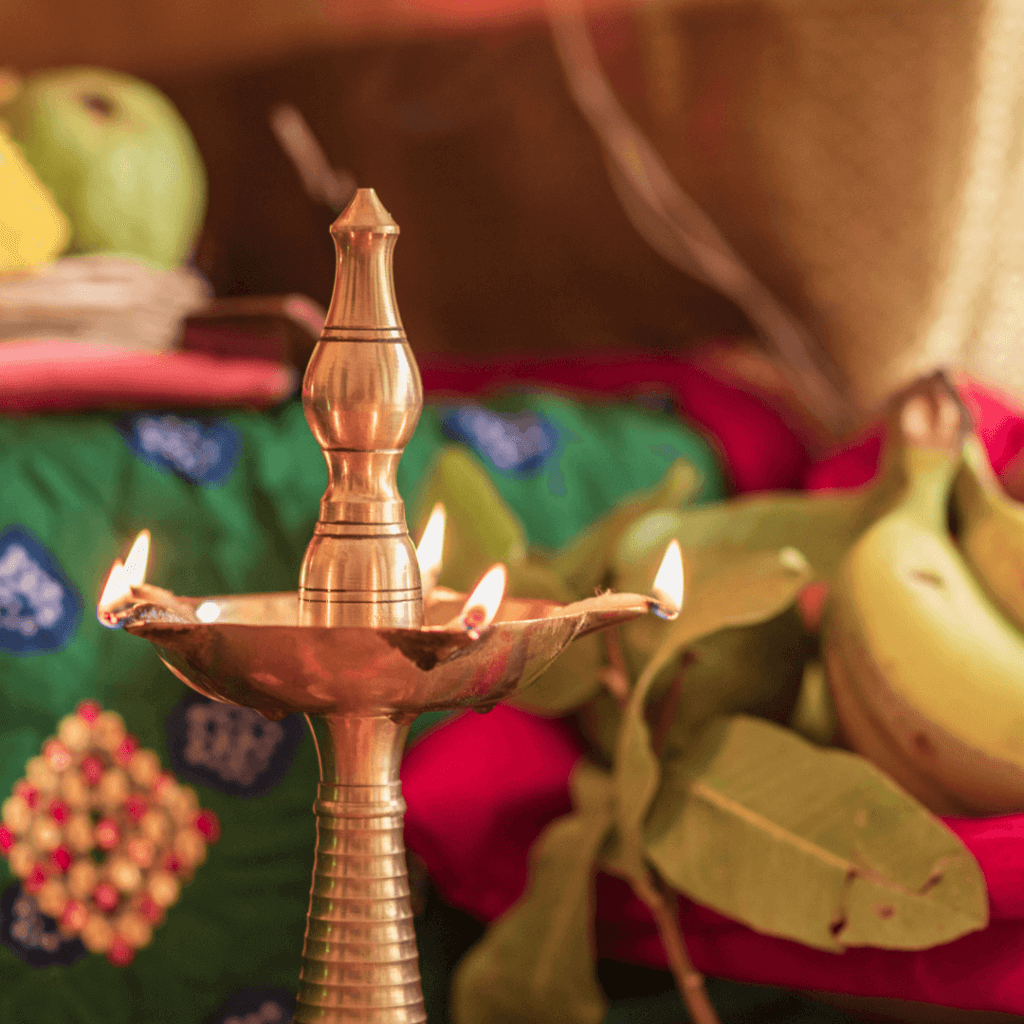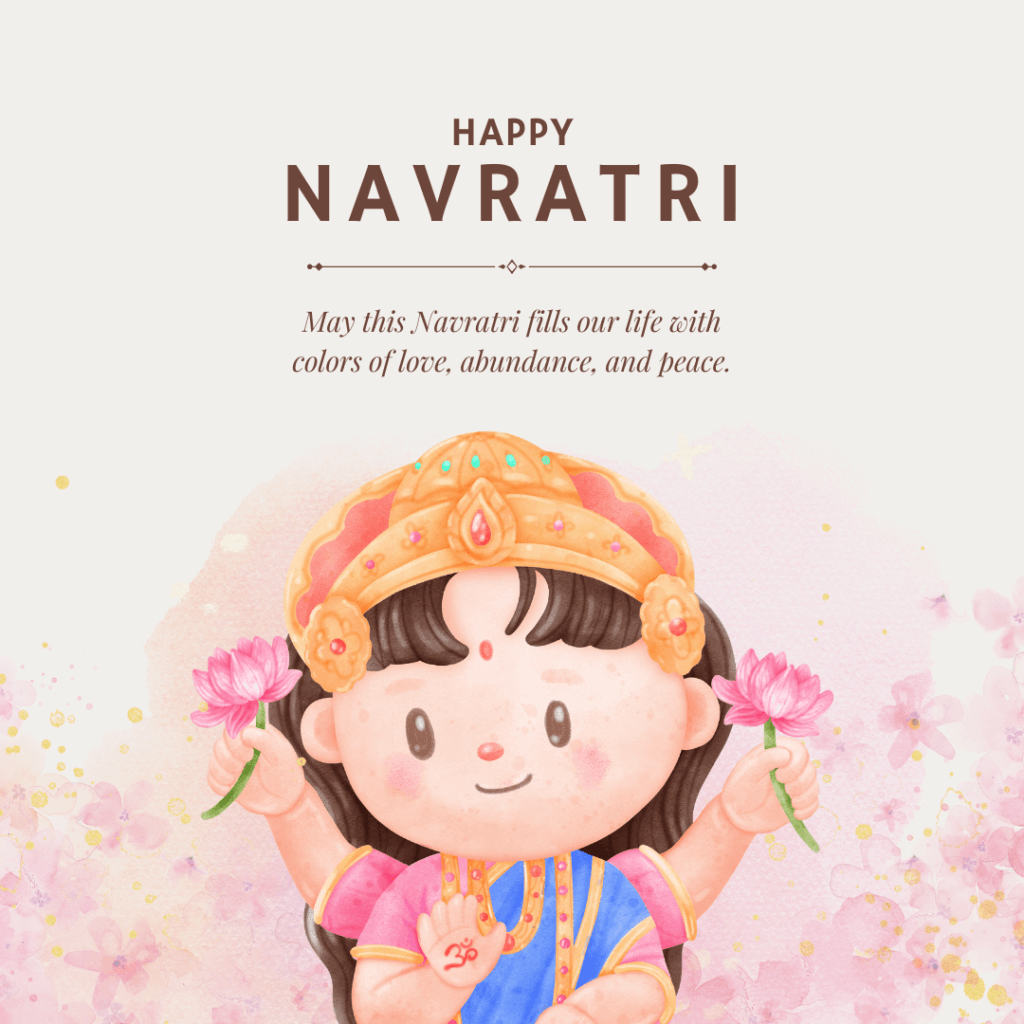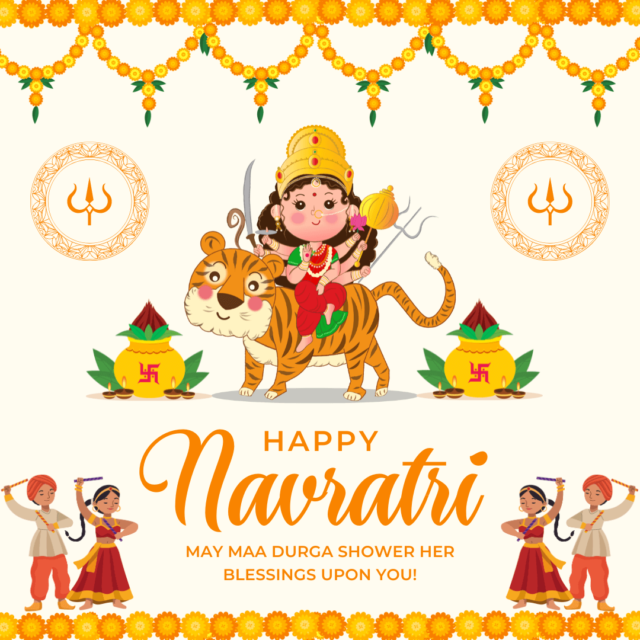What is Chaitra Navratri
What is Chaitra Navratri? Navratri, meaning “nine nights” in Sanskrit, is a vibrant Hindu festival observed across India. It honors the divine feminine, specifically the nine forms of Durga, an aspect of the supreme goddess Adi Parashakti (Furthermore, you can look at Art of Living’s information on Chaitra Navratri: https://www.artofliving.org/in-en/navratri/significance-of-chaitra-navratri-and-sharad-navratri). Interestingly, there are four Navratris in a year, but the most widely celebrated ones occur twice:
- Chaitra Navratri (Spring Navratri): This is the one that begins today, April 9th, 2024, and falls in the springtime (March/April). It marks the beginning of the Hindu New Year in some regions and culminates in Ram Navami, celebrating Lord Rama’s birth.
- Sharad Navratri (Autumn Navratri): This is the grander of the two festivals, occurring in the post-monsoon season (September-October). It celebrates Durga’s victory over the demon Mahishasura and culminates in Dussehra, symbolizing the triumph of good over evil.
What is the importance of Fasting in Navratri?
In Chaitra Navratri, fasting (known as Navratri Vrat) holds a significant place for several reasons:
- Purification: The dietary restrictions during the fast are believed to cleanse the body of toxins and impurities. This focus on simple, vegetarian meals allows the digestive system to rest and promotes a sense of lightness.
- Spiritual Focus: By abstaining from certain foods and activities, devotees can minimize distractions and devote themselves more fully to prayer, meditation, and connecting with the divine (Goddess Durga).
- Self-Discipline: Following the rules of the fast requires discipline and commitment. This practice is seen as a way to strengthen willpower and develop greater control over one’s desires.
- Inner Peace: Fasting can lead to a sense of calmness and mental clarity. By simplifying one’s diet and lifestyle, it’s believed that the mind becomes less clouded and more receptive to spiritual experiences.
Regional Flavors of Navratri

While the core theme remains the same, Navratri’s celebrations vary widely across India:
- Eastern India (West Bengal): Durga Puja takes center stage, with grand pandals (temporary shrines) housing beautifully crafted Durga idols. Festivities involve community prayers, pandal hopping, and delicious street food.
- Western India (Gujarat): Vibrant Garba and Dandiya Raas dances become the highlight. Women in colorful attire perform graceful Garba around a central pot, while Dandiya Raas involves men and women using colorful sticks for a lively dance.
- North India: Here, Navratri is associated with Ramayana. People observe fasts, perform special pujas (prayers), and enact scenes from the epic Ramayana through Ramlila plays.
Did you know?
- Nine Exceptional Forms: Each day of Navratri honors a different manifestation of Durga, each with unique attributes and symbolic weapons.
- Fasting or Feasting? Practices vary. Some observe strict vegetarian fasts, while others enjoy special Navratri delicacies.
- Power in Color: Specific colors are associated with each day, influencing clothing choices and decorations during the festival.
- Royal Legacy: Durga Puja in Mysore, Karnataka, is a particularly extravagant affair, with a rich history dating back centuries.
Baisakhi is coming soon – have a read of how Baisakhi is celebrated and what it is?
Colors of Navratri

Colors play a significant role in Navratri, and each day is associated with a specific color that holds symbolic meaning. Here’s a breakdown of the nine days and their colors:
Day 1: Color – Red (Goddess Shailputri)
- Red signifies energy, passion, and new beginnings, reflecting the commencement of Navratri.
Day 2: Color – Royal Blue (Goddess Brahmacharini)
- Royal Blue represents calmness, serenity, and introspection, aligning with the qualities of the meditating goddess.
Day 3: Color – Yellow (Goddess Chandraghanta)
- Yellow symbolizes brightness, optimism, and knowledge, mirroring the radiant Durga form.
Day 4: Color – Green (Goddess Kushmanda)
- Green represents growth, prosperity, and harmony with nature, reflecting the goddess who created the universe.
Day 5: Color – Grey (Goddess Skandamata)
- Grey signifies balance, neutrality, and a foundation of strength, embodying the motherly aspect of Durga.
Day 6: Color – Orange (Goddess Katyayani)
- Orange represents courage, fire, and determination, reflecting the warrior goddess who battles evil.
Day 7: Color – White (Goddess Kalaratri)
- White signifies purity, peace, and cleansing, invoking the serenity of Durga in her fierce form.
Day 8: Color – Pink (Goddess Mahagauri)
- Pink represents compassion, love, and forgiveness, reflecting the gentle and benevolent form of Durga.
Day 9: Color – Sky Blue (Goddess Siddhidatri)
- Sky Blue signifies calmness, vastness, and achieving goals, symbolizing the culmination of Navratri and the fulfillment of desires.
While wearing these colors is a tradition, the main focus remains on worshipping the different forms of Durga.
How are Gudi Padwa & Ugadi related in Navratri?
Let’s hear it from a friend of mine!
Me: Hey, did you know Chaitra Navratri is coming up soon?
Friend: Oh yeah, I’m excited! Nine days of worshipping Durga Puja, such a powerful time.
Me: Totally! But depending on where you are in India, there might be even more to celebrate.
Friend: More? Tell me about it!
Me: Well, in Maharashtra, they have this amazing festival called Gudi Padwa that falls on the same day as the first day of Navratri. They raise these colorful flags called Gudis to celebrate the New Year and ward off evil.
Friend: Wow, that sounds fascinating! What about other regions?
Me: Down south in Andhra Pradesh, Karnataka, and Telangana, they have Ugadi which is also their New Year. They have special rituals like reading out predictions for the year ahead and feasting on delicious foods.
Friend: So, it’s like a big, pan-Indian celebration of spring, new beginnings, and Durga Puja all rolled into one?
Me: Exactly! Chaitra Navratri is the main event, but Gudi Padwa and Ugadi add these vibrant regional layers of tradition and festivities. It’s a beautiful way to welcome the spring season!
Now you know what Chaitra Navratri is. Are you ready for fasting? Are you following the color coordinated clothing?
